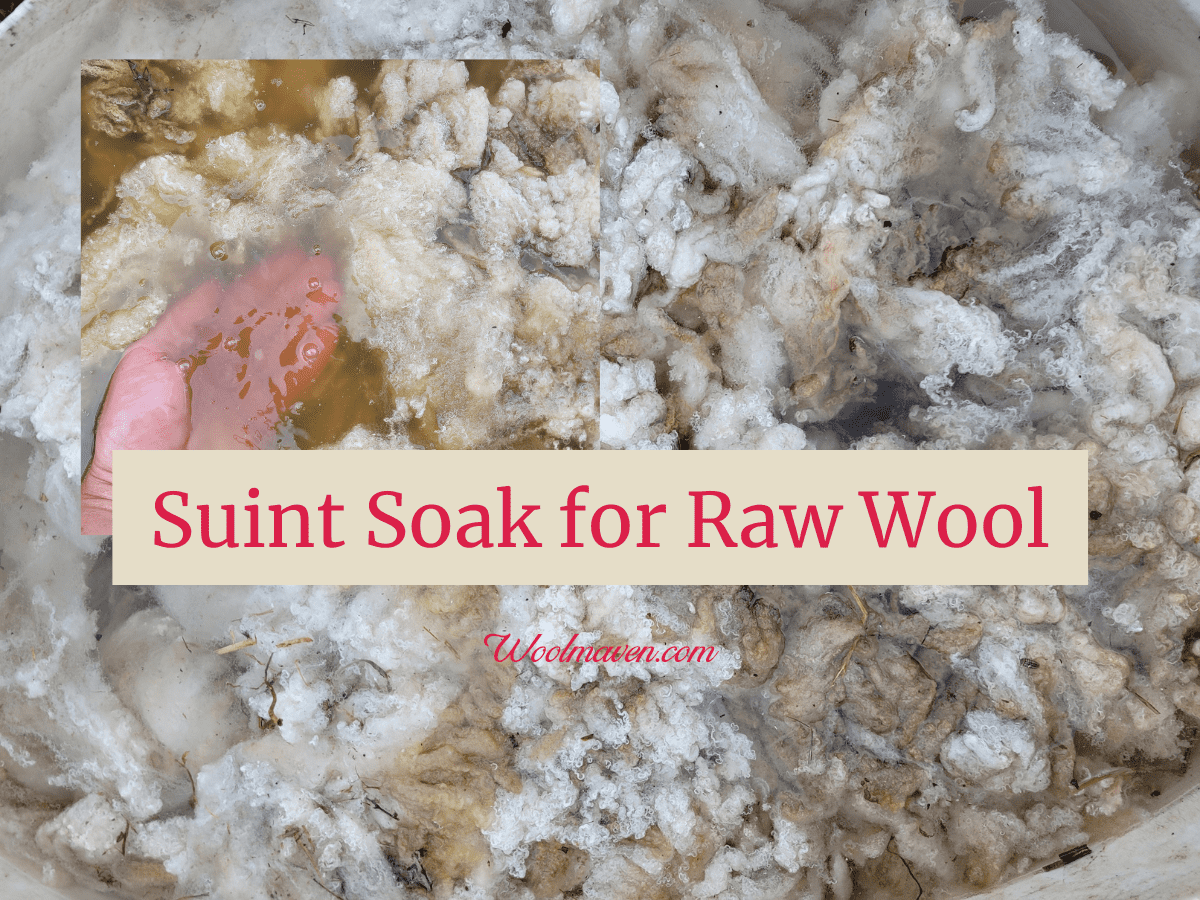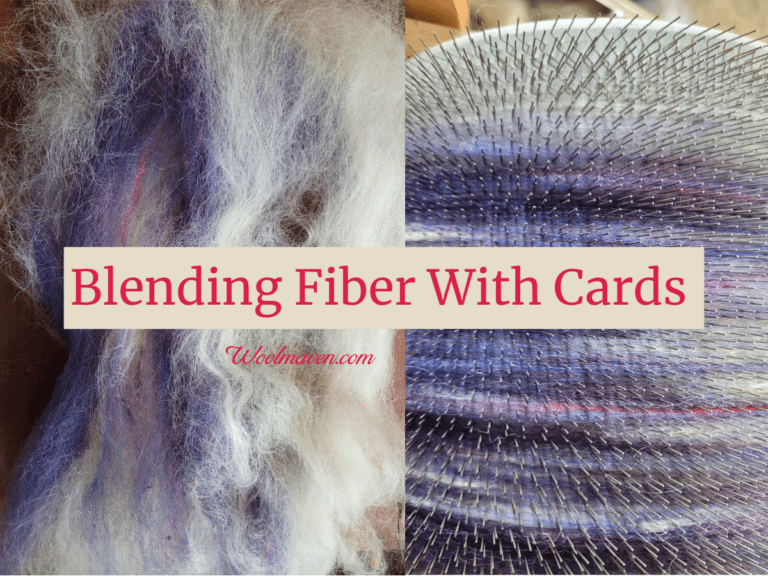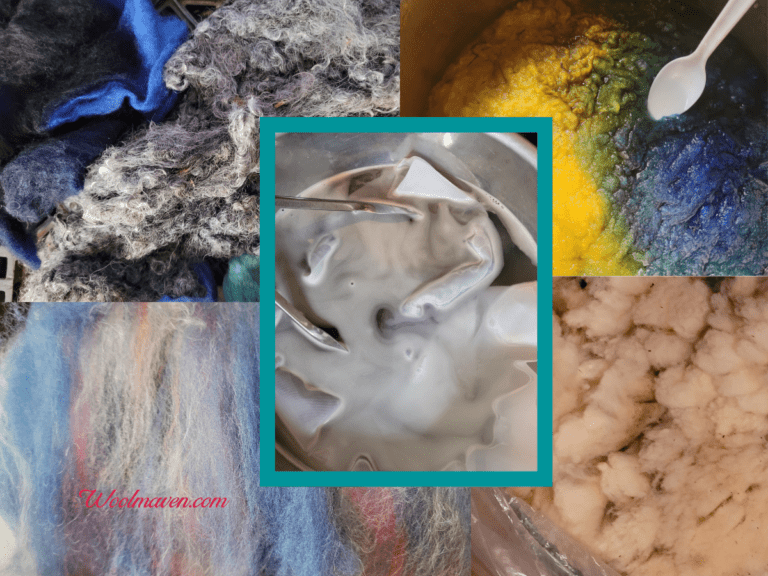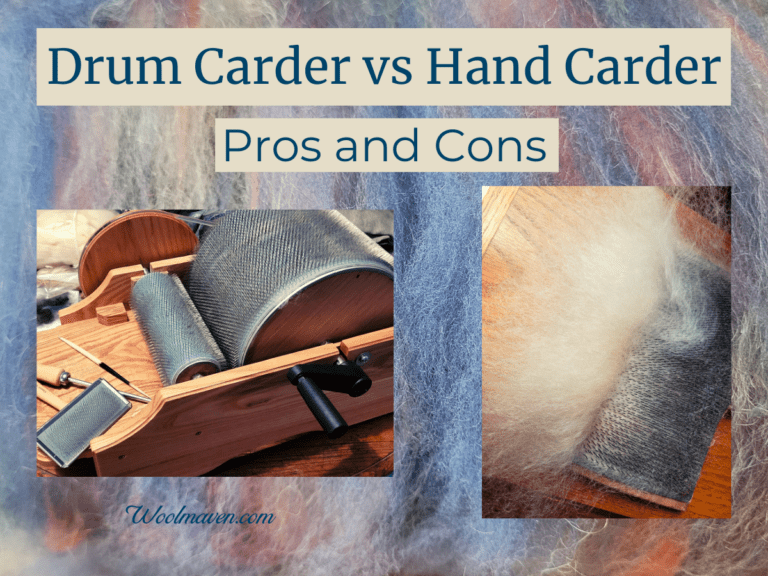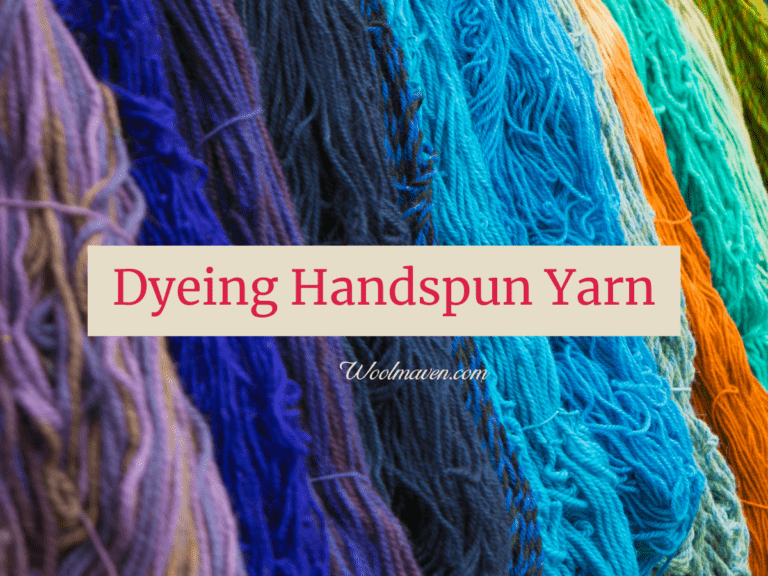How Do You Wash Wool In A Suint Bath?
When you are thinking about how to get your raw wool ready for spinning, you may have come across putting the wool in something called a suint bath.
What is a suint bath and why would you use one for your raw wool fleece?
A suint bath or suint wash is an overnight soak in plain water for raw wool. The suint soak removes dirt from the fleece but leaves the lanolin intact.
If you enjoy working with a low grease fleece but would like a little of the dirt, not the lanolin, removed, using a suint soak is a good option to use for your wool preparation.
How To Get Raw Wool Ready For Spinning In The Grease gives you a few more tips on working with raw wool and helps you decide if a suint soak is needed.
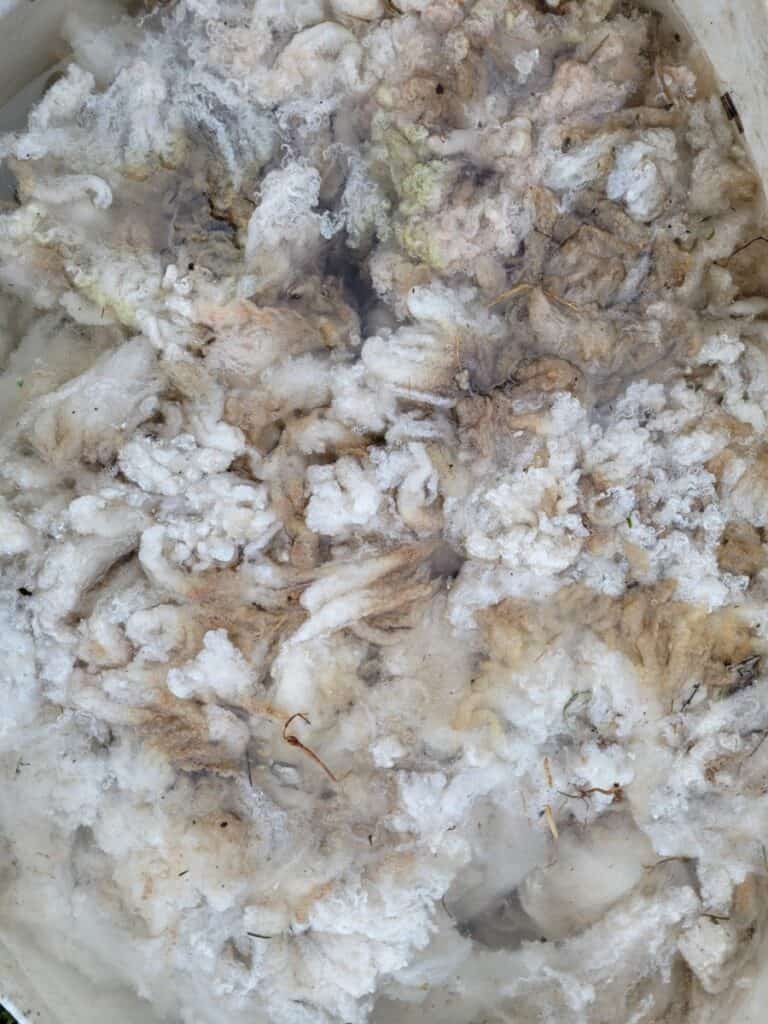
What is a suint bath?
A suint bath is an overnight soak for your raw wool. The soak is simply water at lukewarm temperature.
You do not need anything else in the soaking water and can use lukewarm water straight from your tap.
Be sure to give the wool room to expand a bit in the water by using a roomy container. This will let the dirt drop out of the wool.
If you have the wool crammed into a tight container, there is no room for the dirt to float out.
Why use a suint bath?
The purpose of a suint bath is to get out the dirt and debris in wool but to leave the lanolin.
This is an in between step for any wool that needs a bit more loosening up or dirt removed before spinning, but does not need to be washed, since you’ll be keeping most of the lanolin.
A suint soak is great for a fleece that is almost “there” for spinning raw, but has some dirty tips or is just a bit too resistant to getting well separated out fibers for spinning.
I have a colored ewe, our only one, and I love the fleece. It is a nice dark brown and is fairly soft, for a commercial ewe.
However, she has a tippy fleece and tends to have more than her share of VM (vegetable matter) from hay and, of course, whatever she can poke around in while on the pasture.
I like to work with raw wool, but with the tippy ends, this fleece just won’t do it for me. But, when I do a suint soak, then the tips loosen up and I can flick the locks and spin it easily.
Before the soak, I could spin the wool, but it always had bumps where the tangled up tips were. Not the greatest.
After the suint soak, the wool still has the lanolin but does not have the crunched up tips that were giving me trouble before.
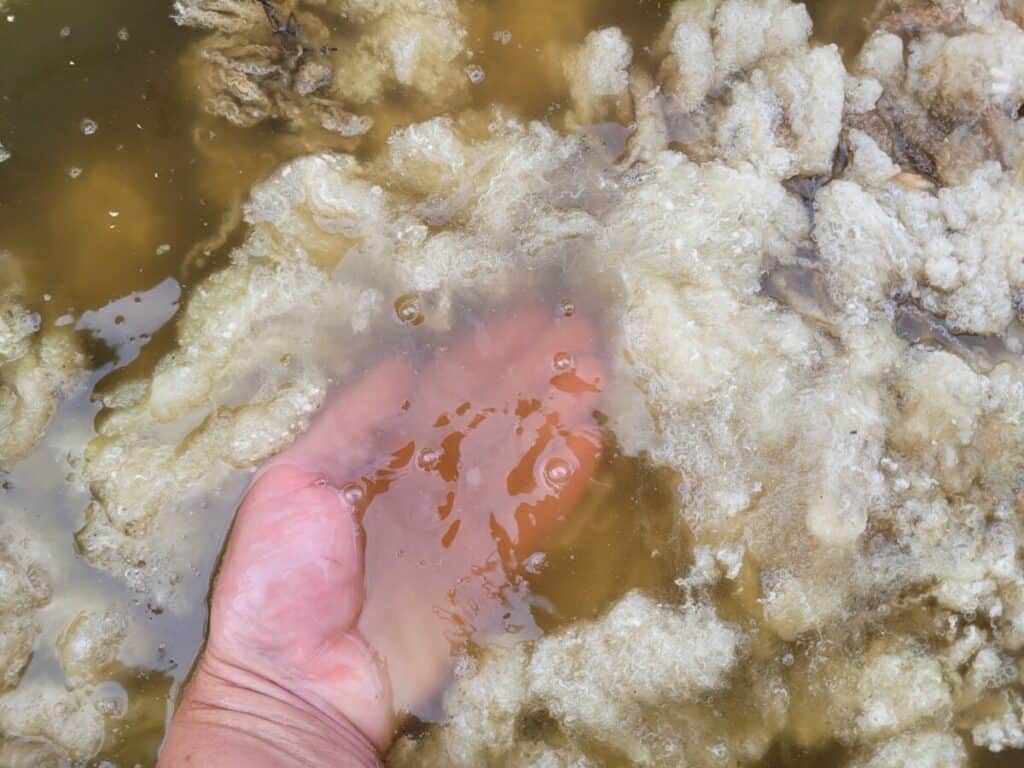
How to set up a suint bath for your wool
Set up your suint soak by finding a large container for your wool. You want the wool to have plenty of room to expand out in the water and allow the dirt to be released.
Fill the container, then put in the wool. Do not run the water on to the wool. Use lukewarm, not hot, water straight from your tap.
I put the wool in the container and let the wool sink on it’s own.
You can slowly push it down into the water with something wide, like a cookie rack or the bottom of a large bowl as long as you do not poke around.
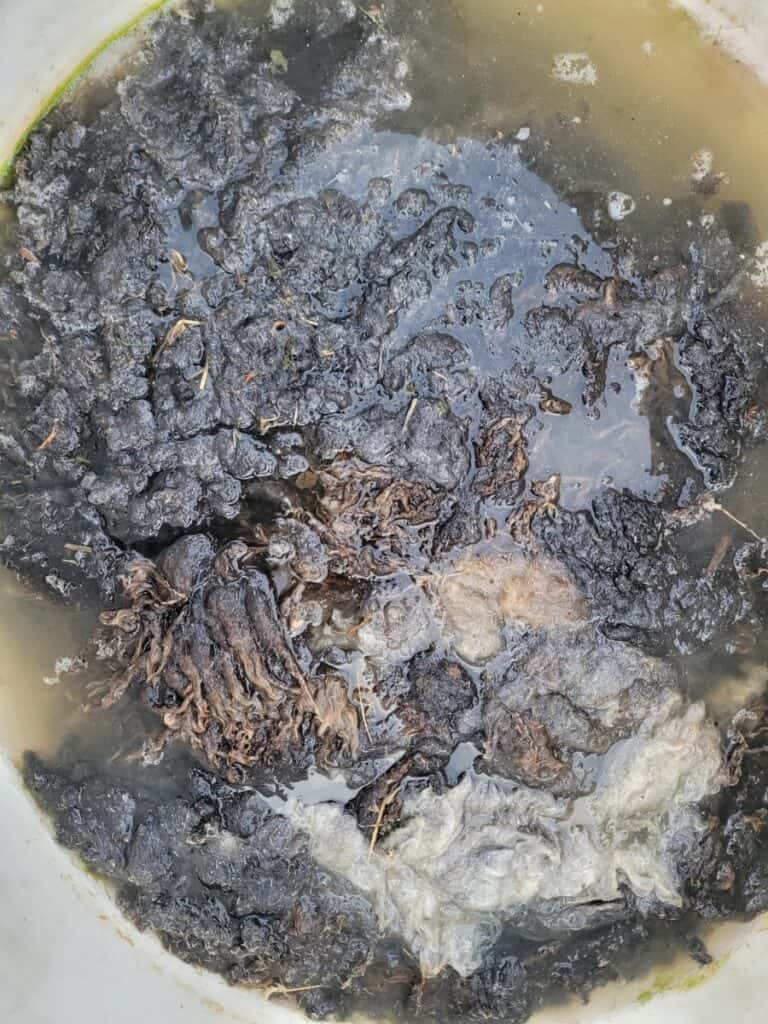
If your wool is prone to felting, you’ll need to be careful here. I recommend using a laundry mesh bag for your wool, especially if you are not sure how easily it will felt.
If you don’t have a mesh bag, consider getting one. They are easy to find and inexpensive, I got mine while grocery shopping, it was right on the shelf and was $2.49.
After your wool sets for the night in the soaking water, gently pull it out and let it drain. You want all the dirty water going down the drain, not into the rinse water.
Now fill the container again with a rinse, I just use lukewarm again, but it really doesn’t matter as long as it’s not hot. You may want another rinse, depending on how the wool looks to you.
Spread the wool out to dry and you’re done!
How to know if suint soaking is enough?
How do you know if the suint soak was sufficient to remove the dirt and loosen up the wool enough to for you to enjoy working with it?
This is one of those times where you just have to try it and see what happens.
A suint soak can work really well for:
- low grease fleeces
- wool that has some dirt
- fleeces that you want to spin with the lanolin
If, after the overnight soak, the wool is still tacky, hard to pull apart into spinnable fibers or looks dirty, suint soaking is not going to be the fiber preparation method that works for this wool.
You’ll have to move on to washing, which will remove the lanolin and the dirt.
Wools that are unlikely to be successfully suint soaked are:
- wool that has a lot of grease
- wool that is super dirty (may take multiple rounds to remove dirt)
- wool that does not easily separate out with your fingers
- wool that you plan to dye
You can try suint soaking with any wool and see how it goes, but if your wool has any of the characteristics listed above, suint soaking is unlikely to give you the results you are looking for in a workable spinning fiber.
How To Wash Raw Wool Before Spinning will give you the details on actually washing your fleeces, if you decide more of the lanolin needs to be removed before spinning.
If you plan to dye the wool, you need to actually wash it, not just soak it. The lanolin needs to be removed from the wool to get good pigmentation of the fibers.
Classic Carder has a short and easy to read article on preparing fleece to spin in which they recommend a suint soak as the preferred spinning fleece preparation.

